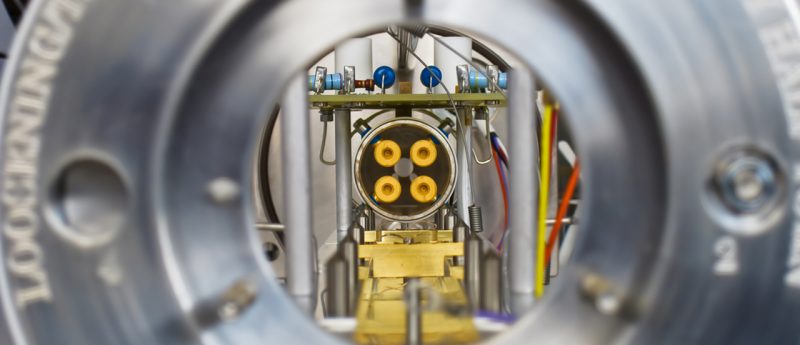New simplified mass spectrometric technique uses laser and graphene

A research team at Daegu Gyeongbuk Institute of Science and Technology (Daegu, South Korea) have successfully developed micrometer sized images of bio samples using a small inexpensive laser. This new technique can obtain high-resolution images for mass spectrometric analysis without sample preparation.
Currently, many advance preparations are required for mass spectrometric imaging of biometric samples using ‘specimen’, which involves thinly cutting the sample prior to analysis. Also, as the specimen cannot be analyzed accurately at room temperature or atmospheric pressure, it must be prepared artificially.
This new technology allows for samples to be analyzed without any preparation process, as it can produce high-resolution images without an experimental environment using a continuous wave laser. This is predicted to be used widely in medicine and medical diagnostic fields.
The research team installed a lens carrying a continuous wave laser right below a microscope substrate where the specimen was mounted, then they focused the laser on it to measure mass spectra by examining molecules by desorption. Despite the laser being weaker in energy compared to other lasers, it is still able to analyze mass spectra due to the use of graphene substrate under the specimen. The honeycomb-patterned graphene has very high heat conductivity and can covert light into heat, therefore, it can generate enough heat for specimen analysis with only a small amount of light from the continuous wave laser. Even when using a 20x magnifying lens this new technology can obtain high-resolution analysis images, because it leaves enough space to observe the specimen much more closely.
“Through this technology, we could greatly shorten the preparation time for analysis by omitting the specimen preprocessing step. Our next plan is to develop the technology further so it can be applied in various areas such as medical diagnosis,” explained Chair-professor Dae Won Moon (Daegu Gyeongbuk Institute of Science and Technology).
Sources: Kim JY, Lim H, Lee SY et al. Graphene-coated glass substrate for continuous wave laser desorption and atmospheric pressure mass spectrometric imaging of a live hippocampal tissue. ACS Appl. Mater. Interfaces, 11(30), 27153–27161 (2019); https://phys.org/news/2019-08-mass-spectrometric-technique-laser-graphene.html
